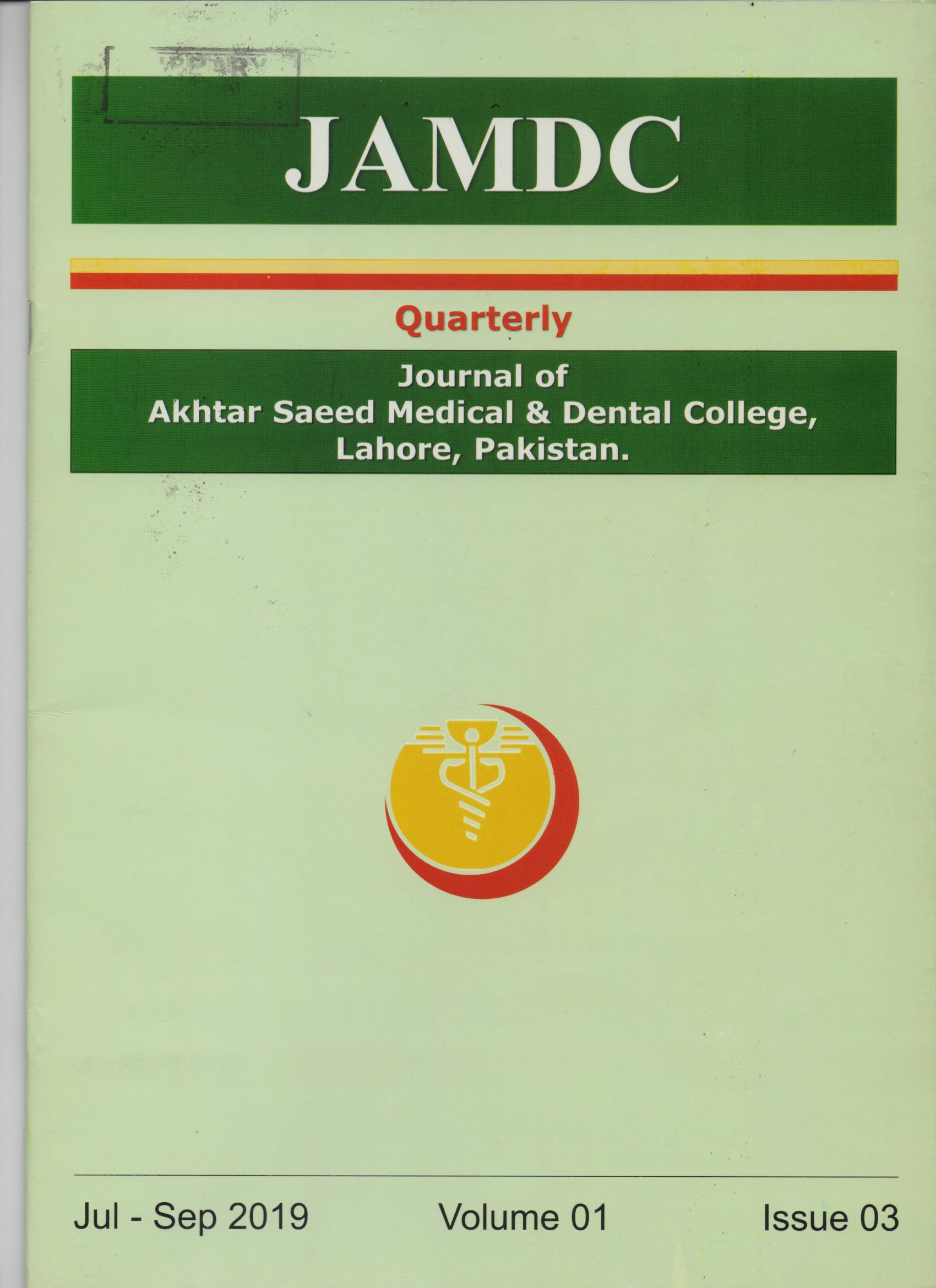Original Articles GENDER DIFFERENCE IN STRESS LEVELS AMONG MEDICAL AND NON- MEDICAL STUDENTS OF LAHORE
Keywords:
Stress, Medical Students, Medical EducationAbstract
Objective:
To compare the gender difference in stress levels among students of medical and nonmedical institutions of Lahore.
Methodology:
This was a cross-sectional study conducted in medical students of Akhter Saeed Medical and Dental College, Lahore and non-medical students of Beacon House National University, Lahore from January 2018 to August 2018.A sample of two hundred and ninety- one student was collected by non- probability consecutive sampling technique which includes one hundred and fifty medical students and one hundred and forty-one non- medical students. Data was collected and analyzed using SPSS 24. To compare stress levels and gender differences in these levels, chi-square test was applied and p-value of less than and equal to 0.05 was fixed as significant.
Results:
In this study 119 (40.9%) males and 172 (59.1%) female students participated. Among them, 150 (51.5%) were medical students and 141 (48.5%) were non-medical students. Out of 291 students, 46(15.8%) had severe stress. Results showed that 61(21%) students were smokers and 96(33%) were taking drugs. Sixty-seven students (23%) stated the reason of stress as the death of their family members in the last one year. A large proportion of students195 (67%) reported that they work harder and accomplish less, 188 (64%) had difficulty in sleeping and 206 (70.8%) had mood swings. One hundred and eighty-seven students (64.3%) felt frustration due to a lack of resources. One hundred and eighty-seven students (64.3%) give up their social life to succeed in university. The exam was the major cause of stress constituting 218 (74.9%) students. There was no significant difference between the stress level of medical and non-medical students (p=0.658) and no difference was observed in two genders (p=0.962).
Conclusion:
Stress is prevalent in both medical and non-medical students irrespective of their career pathway. Both genders are affected by high-stress levels during academic years.
